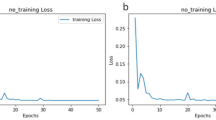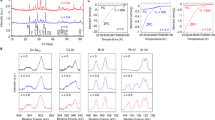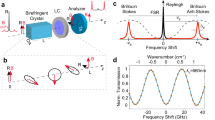Abstract
Birefringence and its wavelength dependence are important properties for optical applications, such as liquid crystal displays and pick-up lenses. Cellulose esters, which are eco-friendly materials from biomass resources, have been used in optical materials due to their transparency and heat resistance. This review summarized our recent works on birefringence control of cellulose esters by substitution of multiple ester groups, addition of low-mass molecules, and formation of a porous structure. Cellulose acetate propionate (CAP), which has acetyl and propionyl groups in a pyranose unit, exhibited positive birefringence with extraordinary wavelength dispersion owing to contributions from its two esters, while cellulose triacetate (CTA) showed negative birefringence with ordinary dispersion. Moreover, the effect of substitution sites (C-2, C-3, and C-6) on birefringence and its wavelength dependence was investigated by comparing birefringence data of CTA and xylan acetate. The addition of low-mass molecules improved the value of birefringence due to the intermolecular orientation correlation with the matrix cellulose esters. The anisotropic porous structure in CTA films, which was prepared by thermoinduced phase separation, generated extraordinary wavelength dispersion of birefringence.
Similar content being viewed by others
Log in or create a free account to read this content
Gain free access to this article, as well as selected content from this journal and more on nature.com
or
References
Edgar KJ, Buchanan CM, Debenham JS, Rundquist PA, Seiler BD, Shelton MC, et al. Advances in cellulose ester performance and application. Prog Polym Sci. 2001;26:1605–88.
Kondo T, Sawatari C, Manley RS, Gray DG. Characterization of hydrogen bonding in cellulose-synthetic polymer blend systems with regioselectively substituted methylcellulose. Macromolecules. 1994;27:210–5.
Krasovskii AN, Plodistyi AB, Polyakov DN. IR study of distribution of primary and secondary functional groups in highly substituted cellulose acetates, acetomaleates, and acetophthalates. Russ J Appl Chem. 1996;69:1048–54.
Heinze T, Dicke R, Koschella A, Kull AH, Klohr EA, Koch W. Effective preparation of cellulose derivatives in a new simple cellulose solvent. Macromol Chem Phys. 2000;201:627–31.
Sata H, Murayama M, Shimamoto S. Properties and applications of cellulose triacetate film. Heidelberg, Germany: Wiley-VCH; 2003.
Ilharco LM, de Barros RB. Aggregation of pseudoisocyanine iodide in cellulose acetate films: Structural characterization by FTIR. Langmuir. 2000;16:9331–7.
Songsurang K, Miyagawa A, Abd Manaf ME, Phulkerd P, Nobukawa S, Yamaguchi M. Optical anisotropy in solution-cast film of cellulose triacetate. Cellulose. 2012;20:83–96.
Saito H, Inoue T. Chain orientation and instrinsic anisotropy in birefringence-free polymer blends. J Poly Sci Part-B Poly Phys. 1987;25:1629–36.
Uchiyama A, Yatabe T. Analysis of extraordinary birefringence dispersion of uniaxially oriented poly(2,6-dimethyl 1,4-phenylene oxide)/atactic polystyrene blend films. Jpn J Appl Phys Part-1. 2003;42:3503–7.
Tagaya A, Iwata S, Kawanami E, Tsukahara H, Koike Y. Zero-birefringence polymer by the anisotropic molecule dope method. Appl Opt. 2001;40:3677–83.
Abd Manaf ME, Tsuji M, Shiroyama Y, Yamaguchi M. Wavelength dispersion of orientation birefringence for cellulose esters containing tricresyl phosphate. Macromolecules. 2011;44:3942–9.
Abd Manaf ME, Miyagawa A, Nobukawa S, Aoki Y, Yamaguchi M. Incorporation of low-mass compound to alter the orientation birefringence in cellulose acetate propionate. Opt Mater. 2013;35:1443–8.
Iwasaki S, Satoh Z, Shafiee H, Tagaya A, Koike Y. Design and synthesis of zero-zero-birefringence polymers in a quaternary copolymerization system. Polymer. 2012;53:3287–96.
Uchiyama A, Ono Y, Ikeda Y, Shuto H, Yahata K. Copolycarbonate optical films developed using birefringence dispersion control. Polym J. 2012;44:995–1008.
Cimrova V, Neher D, Kostromine S, Bieringer T. Optical anisotropy in films of photoaddressable polymers. Macromolecules. 1999;32:8496–503.
Cho CK, Kim JD, Cho K, Park CE, Lee SW, Ree M. Effects of the lamination temperature on the properties of poly(ethylene terephthalate-co-isophthalate) in polyester-laminated tin-free steel can-I. Characterization of poly(ethylene terephthalate-co-isophthalate). J Adh Sci Tech. 2000;14:1131–43.
Osaki K, Inoue T, Hwang EJ, Okamoto H, Takiguchi O. Dynamic birefringence of amorphous polymers. J Non-Cryst Sol. 1994;172:838–49.
Sakurai K, Fuji M. Optical properties of a low birefringence polyester containing fluorine side chain I. Polym J. 2000;32:676–82.
Maeda A, Inoue T. On the viscoelastic segment size of cellulose. Nihon Reoroji Gakkaishi. 2011;39:159–63.
Shafiee H, Tagaya A, Koike Y. Mechanism of generation of photoelastic birefringence in methacrylate polymers for optical devices. J Polym Sci Part B Polym Phys. 2010;48:2029–37.
Ibn-Elhaj M, Schadt M. Optical polymer thin films with isotropic and anisotropic nano-corrugated surface topologies. Nature. 2001;410:796–9.
Kunzner N, Diener J, Gross E, Kovalev D, Timoshenko VY, Fujii M. Form birefringence of anisotropically nanostructured silicon. Phys. Rev. B 2005;71:195304.
Richert R, Angell CA. Dynamics of glass-forming liquids. V. On the link between molecular dynamics and configurational entropy. J Chem Phys. 1998;108:9016–26.
Yamaguchi M, Okada K, Abd Manaf ME, Shiroyama Y, Iwasaki T, Okamoto K. Extraordinary wavelength dispersion of orientation birefringence for cellulose esters. Macromolecules. 2009;42:9034–40.
Nobukawa S, Enomoto-Rogers Y, Shimada H, Iwata T, Yamaguchi M. Effect of acetylation site on orientation birefringence of cellulose triacetate. Cellulose. 2015;22:3003–12.
Nobukawa S, Nakao A, Songsurang K, Pulkerd P, Shimada H, Kondo M, et al. Birefringence and strain-induced crystallization of stretched cellulose acetate propionate films. Polymer. 2017;111:53–60.
Kono H, Numata Y, Nagai N, Erata T, Takai M. CPMAS C-13 NMR and X-ray studies of cellooligosaccharide acetates as a model for cellulose triacetate. J Polym Sci Pol Chem. 1999;37:4100–7.
Tagaya A, Koike Y. Compensation and control of the birefringence of polymers for photonics. Polym J. 2012;44:306–14.
Nobukawa S, Urakawa O, Shikata T, Inoue T. Evaluation of nematic interaction parameter between polymer segments and low-mass molecules in mixtures. Macromolecules. 2010;43:6099–105.
Doi M, Pearson D, Kornfield J, Fuller G. Effect of nematic interaction in the orientational relaxation of polymer melts. Macromolecules. 1989;22:1488–90.
Songsurang K, Shimada H, Nobukawa S, Yamaguchi M. Control of three-dimensional refractive indices of uniaxially-stretched cellulose triacetate with low-molecular-weight compounds. Eur Polym J. 2014;59:105–12.
Nobukawa S, Aoki Y, Yoshimura H, Tachikawa Y, Yamaguchi M. Effect of aromatic additives with various alkyl groups on orientation birefringence of cellulose acetate propionate. J Appl Polym Sci. 2013;130:3465–72.
Nobukawa S, Hayashi H, Shimada H, Kiyama A, Yoshimura H, Tachikawa Y, et al. Strong orientation correlation and optical anisotropy in blend of cellulose ester and poly(ethylene 2,6-naphthalate) oligomer. J Appl Polym Sci. 2014;131:40570.
Nobukawa S, Aoki Y, Fukui Y, Kiyama A, Yoshimura H, Tachikawa Y, et al. The effect of flexible chains on the orientation dynamics of small molecules dispersed in polymer films during stretching. Polym J. 2015;47:294–301.
Flanders DC. Submicrometer periodicity gratings as artificial anisotropic dielectrics. Appl Phys Lett. 1983;42:492–4.
Nobukawa S, Shimada H, Aoki Y, Miyagawa A, Vu Ahn D, Yoshimura H, et al. Extraordinary wavelength dispersion of birefringence in cellulose triacetate film with anisotropic nanopores. Polymer. 2014;55:3247–53.
Shimada H, Nobukawa S, Yamaguchi M. Development of microporous structure and its application to optical film for cellulose triacetate containing diisodecyl adipate. Carbohydr Polym. 2015;120:22–8.
Acknowledgements
This work was partly supported by the Japan Society for the Promotion of Science KAKENHI (grant numbers 23850008 and 25870268) and grants from the Ogasawara Foundation for the Promotion of Science and Engineering and the Kyoto Technoscience Center. We express sincere gratitude to Professor Masayuki Yamaguchi for his continuous and kind guidance and to Professor Tadahisa Iwata, Professor Yukiko Enomoto, Dr. Songsurang Kultida, Dr. Hikaru Shimada, Mr. Hiroki Hayashi, Mr. Yoshihiko Aoki, Mr. Akichika Nakao, and other colleagues for their great efforts toward these works.
Author information
Authors and Affiliations
Corresponding author
Ethics declarations
Conflict of interest
The author declares that he has no conflict of interest.
Additional information
Publisher’s note: Springer Nature remains neutral with regard to jurisdictional claims in published maps and institutional affiliations.
Rights and permissions
About this article
Cite this article
Nobukawa, S. Design of birefringence and its wavelength dispersion for cellulose derivatives using substitution, low-mass additives, and porous structures. Polym J 51, 835–843 (2019). https://doi.org/10.1038/s41428-019-0199-y
Received:
Revised:
Accepted:
Published:
Issue date:
DOI: https://doi.org/10.1038/s41428-019-0199-y
This article is cited by
-
Birefringence of cellulose: review, measurement techniques, dispersion models, biomedical applications and future perspectives
Wood Science and Technology (2024)
-
Structure and morphology of cellulose fibers in garlic skin
Scientific Reports (2020)



